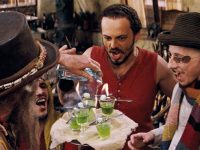
The placebo effect, the set of health benefits produced by receiving a treatment that in itself has no therapeutic effect (placebo), remains a mysterious phenomenon today. This is despite the fact that it is ubiquitous in healthcare, both in clinical trials and in medical treatment. In this sense, placebos are essential in medical research in order to be able to distinguish by comparison whether or not a particular drug has a real health benefit. They help us avoid misleading illusions about the effectiveness of a drug.
Although popular culture often associates the idea of a placebo with a sugar pill, almost anything can have a potential placebo effect: the important thing is that it creates an expectation of health improvement. Thus, a simple plaster, surgery, a saline injection, a massage, the doctor-patient relationship itself, and even a mother’s «magical» incantation «let me kiss your boo-boo bye-bye» can all induce a placebo effect. In addition, treatments that have actually been shown to be effective for specific health problems can also benefit from some additional effect thanks to the placebo effect.
The placebo effect does not have the power to cure cancer or a heart attack, but it is undoubtedly particularly useful in alleviating various (subjective) symptoms such as pain, anxiety, general discomfort or fatigue. Much less well known to society is its opposite, the nocebo effect: the expectation that a particular treatment will cause some kind of harm can actually lead to negative health effects, even with a placebo. A kind of self-fulfilling prophecy.
Is deception a prerequisite for the placebo to «work its magic»? Not at all. More and more clinical trials with people suffering from a wide range of illnesses show that the placebo effect is still very much present, even when patients are carefully told that what they are taking is just a placebo.
However, reinforcing the deception can actually increase the placebo effect. Several studies have found that the more expensive and new a placebo is, the more praise it receives from the doctor, and the more drastic its application (placebo surgeries win hands down in terms of «placebo power»), the stronger the resulting placebo effect. In addition, details such as the colour of the drug, its brand name, the number of doses taken per day, its taste, or its shape can modulate the placebo effect according to the desired indication.
Our history of understanding placebo is relatively short. In 1799, the British physician John Haygarth scientifically described its existence, which he later documented in his book, Of the imagination, as a cause and as a cure of disorders of the body.
In this work, Haygarth describes an experiment he conducted to test the efficacy of Perkins’s metal rods, which, according to the charlatans of the time, could extract disease from the body. To this end, Haygarth studied the effects on the health of rheumatic patients when the «special» rods were used in comparison with identical wooden rods. He was surprised to find that, regardless of the type of stick used, four out of five people with rheumatism reported relief from pain.
Not only was Haygarth the first to demonstrate the placebo effect in a truly scientific way, he also showed how this phenomenon can be one of the great allies of snake-oil salesmen. Today, as more than two centuries ago, there is no shortage of charlatans and convinced innocents shouting from the rooftops that an unproven treatment simply «works» for them.





